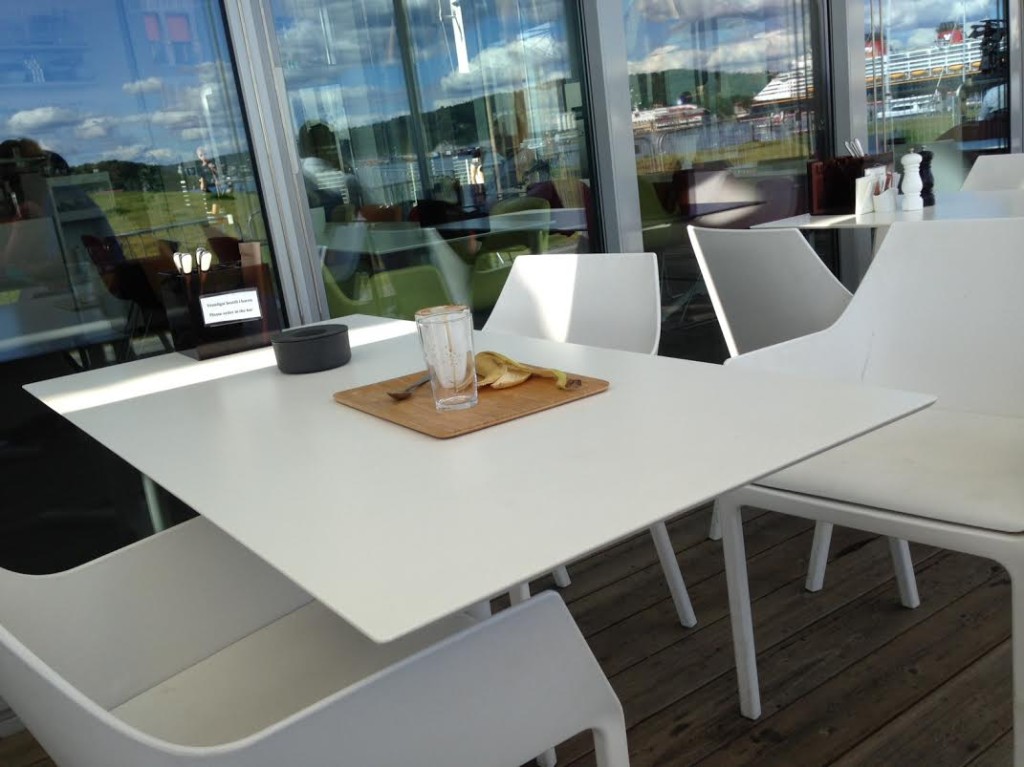 “Art is anything you can get away with Check this out,” Marshall McLuhan once said.
“Art is anything you can get away with Check this out,” Marshall McLuhan once said.
And I think of that quote every time I sense an artist is testing me, needling me, getting to that line.
In Oslo recently at the shiny new Astrup Fearnley Museum of Modern Art, I got that feeling right away. Apart from the sleek waterfront building design by Renzo Piano, it smacks a visitor immediately with one of those cut apart cows by Damien Hirst, whose whole career is getting away with stuff and then moving onto something else. Cutting cows in half and putting them in cases for display is a nasty, unnecessary business of which the animal had no choice. In the 1993 “Mother and Child (Divided),” the cow and calf had no choice. Tasteless.
This is, after all, a museum whose owner paid top price for Jeff Koons’ garish porcelain statue of Michael Jackson and his monkey. And there it is, “Michael and Bubbles,” a 1988 work from Koons (or more likely, his hired hands) that’s part of his own career of poking pop culture sticks in our eye. At least he didn’t cut them in half.
Oh there were some interesting things in there to be sure, given fine display. But the new building, with its odd pathways and corners can be confusing. So it was when I ran into one sculpture made up of a tower shining a light against a wall. Ok, but behind it seemed to be an entry into another room, where there was another tower showing another light. So partly blinded by the light, I started to make my way into that room. That’s when I ran into the mirror. It was a mirror, not an entryway to another room. I was the idiot who ran into illusion and I’d like to think not the first. This was an artist who not only liked to fool the viewer but maybe show contempt for him as well. Mission accomplished.
There was more of this as I walked around now with a headache from the encounter. Because there on the stark museum floor was a banana peel. Well, this was a shock, not only to see such thoughtless trash on the floor of a museum, but in the city of Oslo, which seemed so neat and clean. I almost went to pick it up, or at least indicate to a staffer of the potential danger.
But then I saw one of those cards on the wall a couple of rooms away that let me know that, yes, the banana peel was art too.
You see, it’s part of the artistic mind of Adriana Lara. As we learned here,
Lara stages different situations or interventions in the exhibition space, the example here being the banana peel installation.
Yes, not trash, but an installation.
Each morning, a museum employee eats a banana and discards the peel somewhere in the exhibition space.
The artist cannot even be bothered to pick out a banana, eat it herself, or choose where to carelessly toss it on the exhibit floor; give the job to the uncredited collaborator, the already low paid museum worker.
In her effort, the artist is apparently not looking for some of that top shelf hi jinx from silent films, where banana peels signified spectacular slips and falls in classics like Harold Lloyd’s “The Flirt,” Buster Keaton in “The High Sign” or even the kickoff to Laurel and Hardy’s epic “The Battle of the Century” pie fight.
Bananas were so popular when they were introduced in the U.S. in the mid-18th century, banana peels were a public health problem, with laws enacted and squads of cleanup crews to pick up the peels. Lucky none were in the fancy Oslo museum, where they could have meddled with artistic intent.
My own head still pulsing from a mirror encounter and further annoyed by the peel supposedly taking on artistic airs, I headed out to the admittedly pleasant restaurant alongside the waterside sculpture garden.
There, I was shocked to find someone else had created some art. Right on their take out tray. Naturally I took a picture of it.
